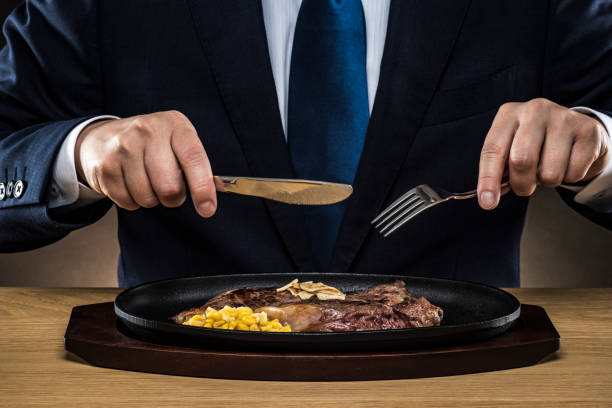As a kitchen professional, mastering knife etiquette at buffets is essential to maintaining class and professionalism in any dining setting. Whether you're preparing dishes for guests or enjoying a meal yourself, how you handle a knife can reflect on your expertise and respect for culinary traditions. In this article, we'll explore the nuances of knife etiquette at buffets and why it matters for those in the culinary field.

The Importance of Knife Etiquette
Knife etiquette is not just about following rules; it's a demonstration of respect and professionalism. When attending or preparing a buffet, understanding the proper use of knives assures that you not only respect the food presented but also enhance the dining experience for all involved. Poor knife etiquette can result in mishaps or even diminish the meal's enjoyment.
Why Knife Etiquette Matters
Buffets offer a wide variety of dishes, often requiring different knife skills. Whether slicing delicate cheeses or carving a roast, understanding the right technique for each dish is crucial. This is where knife etiquette at buffets becomes relevant, guiding you to use the correct knife for each task, ensuring the food is presented and consumed as intended.
Key Aspects of Knife Etiquette at Buffets
Choosing the Right Knife
At a buffet, the choice of knife can influence the ease and effectiveness of serving. Understanding the purpose of each knife type, from steak knives to carving knives, is imperative. For kitchen professionals, knowing when to use a paring knife versus a chef's knife can make a significant difference in the presentation and enjoyment of a dish. For more detailed insights, you can explore German knives for butchering.
Handling Knives with Precision
Proper knife handling is more than just technique; it's about safety and efficiency. Holding the knife correctly allows for better control and reduces the risk of accidents. For instance, the pinch grip technique, where the thumb and forefinger grip the blade's base, offers better control than holding the knife's handle entirely. Techniques like these are crucial for maintaining professionalism at any buffet setting.
Practical Tips for Knife Etiquette at Buffets
Maintaining Cleanliness and Order
In a buffet setting, cleanliness is paramount. Ensuring that knives are wiped clean after each use prevents cross-contamination and maintains the aesthetic of the buffet. This practice is vital for kitchen professionals who aim to uphold high standards of hygiene and presentation.
Respecting the Dining Experience
Knife etiquette extends beyond the technicalities of cutting. It involves respecting the overall dining experience. For example, when cutting a piece of meat, ensure that slices are uniform and appropriately sized for guests to enjoy comfortably. This attention to detail enhances the dining experience and reflects positively on your skills as a kitchen professional.
Enhancing Your Knife Skills for Buffets
Improving your knife skills is an ongoing process. Regular practice and learning from experts can significantly enhance your proficiency. Kitchen professionals can benefit from workshops and tutorials, such as those offered in the German knife cutting techniques blog.
Continental Dining Techniques
For those looking to refine their skills further, understanding continental dining techniques can be beneficial. These involve specific ways of holding and using knives and forks, adding an element of sophistication to any meal. You can explore more about these techniques on Emily Post's Guide to Continental Dining.
Conclusion: Mastering Knife Etiquette at Buffets
Ultimately, knife etiquette at buffets is about more than just cutting food; it's about enhancing the dining experience through precision, respect, and professionalism. For kitchen professionals, mastering this art is crucial in setting themselves apart in the culinary world. Consistent practice, coupled with a deep understanding of etiquette, ensures that every buffet you prepare or attend is a success.

FAQs on Knife Etiquette at Buffets
What are the essential knives needed at a buffet?
Essential knives for a buffet include carving knives, chef's knives, and steak knives. Each serves a specific purpose, ensuring that all types of food can be served effectively.
How can I improve my knife handling skills?
Improving knife handling skills involves regular practice, watching tutorials, and learning from experienced chefs. Consider attending workshops to refine your technique.
Why is knife etiquette important at buffets?
Knife etiquette is important at buffets as it enhances the dining experience, ensures safety, and reflects professionalism. Proper use of knives ensures food is presented and consumed as intended.
This article contains affiliate links. We may earn a commission at no extra cost to you.


























